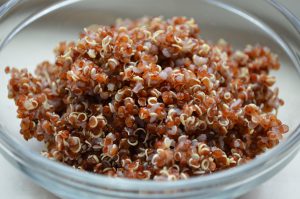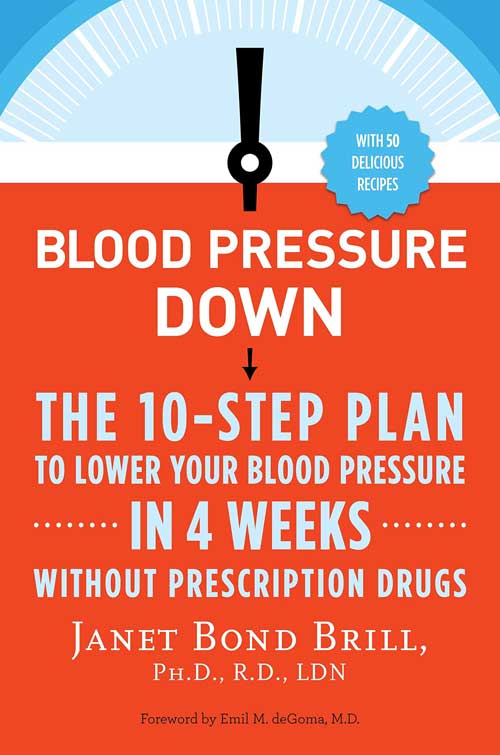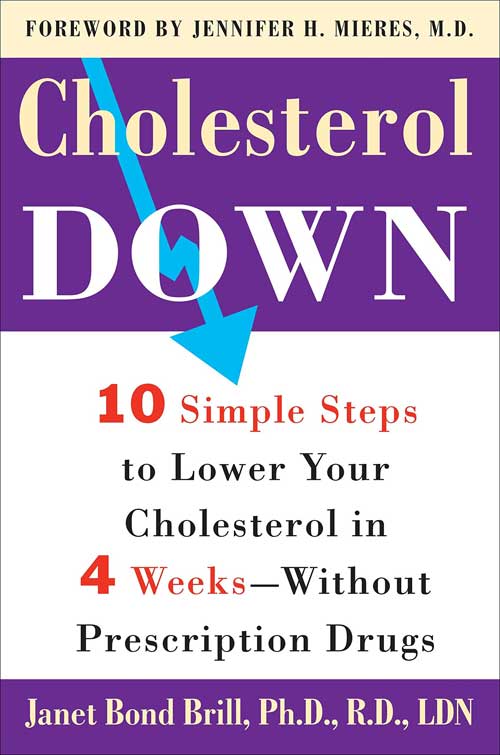By


Jonny Bowden recently penned an article entitled “Statins and Cholesterol: Truth and Fiction.â€
As an expert in cardiovascular disease prevention, a registered dietitian/nutritionist, and author of three books on the topic, I felt compelled to counter his arguments, fearing that people who follow his advice will ultimately harm their heart health—the leading cause of death among American men and women.
I base my arguments on the large body of sound cardiovascular disease prevention data currently in the scientific and medical literature. I have divided his article into five points, listing each point followed by my counterpoint.
Bowden’s Point #1:“Cholesterol doesn’t cause heart diseaseâ€
Bowden states:“I suspect that most docs don’t even know that the old division between ‘good’ and ‘bad’ cholesterol is woefully out-of-date. We now know that there are at least 5 different types of LDL (so called ‘bad’ cholesterol). LDL that looks like big puffy cotton balls is harmless. LDL that looks like little hard bb-pellets is atherogenic.
Nonetheless most docs simply look at ‘LDL’ as if it is all the same—which it’s not. … By focusing exclusively on this one misunderstood molecule [cholesterol]—one which you absolutely need for health, by the way—we have collectively missed paying attention to the far more important risk factors for disease: smoking, high triglycerides, inflammation, and being overweight and sedentary.â€
Counterpoint
Despite the decline in cardiovascular disease (CVD)-associated mortality rates in recent years—most likely due to the widespread use of statin medications along with the increase in interventional surgical procedures—the fact is, coronary artery disease (CAD) still causes one in every six deaths in the United States.
Low-density lipoprotein (LDL) cholesterol has long been recognized as a culprit in the development of atherosclerosis, and LDL remains the primary target of therapy for the prevention of CAD. Elevated LDL cholesterol is central to the development and progression of atherosclerosis—the process of plaque buildup responsible for most heart attacks and stroke.
The scientific proof is irrefutable: lowering LDL cholesterol saves lives. There is simply no argument against the fact that a high level of LDL cholesterol in the bloodstream is a major risk factor for CAD.
Yes, Bowden is correct in that there are various types of LDL particles and that the small, dense LDL composition is the most lethal, or “atherogenic.â€
In fact, a recent study found that a high concentration of the small, dense LDL particles is associated with a more than threefold increase in CHD risk.1
That said, all lipoproteins that contain apolipoprotein B, or apoB—a protein that binds to form lipoproteins thatoriginate in the liver,such as all forms of LDL, very-low-density lipoprotein, and intermediate-density lipoprotein—are atherogenic, meaning, they increase plaque formation.
It is well established that apoB levels are associated with CAD, and some regard these levels as an even better predictor of CAD than LDL levels.
This means that a high level of LDL particles in the bloodstream, regardless of particle size, is also a risk factor for CAD. For this reason, it is imperative that health professionals deliver an uncomplicated message to the public: for the prevention of CAD, aim for an LDL cholesterol level of under 100 milligrams per deciliter (mg/dL).
Additional risk factors for disease that Bowden mentions—smoking, high triglycerides, inflammation, being overweight, and a sedentary lifestyle—should also be emphasized when educating the public on preventing and treating CAD, as they are other modifiable factors that increase risk of developing CAD.
Bowden’s Point #2:“Half the people with normal cholesterol have heart attacks and half of those with no heart disease have high cholesterolâ€
Counterpoint
This is simply not true. A study of people admitted to the hospital for heart events graphically illustrates who gets heart disease and who doesn’t.2
Researchers examined the cholesterol values of 137,000 patients hospitalized with heart disease (primarily first and recurrent heart attack scenarios). At first glance, it seems Bowden is right: half the people admitted had a normal LDL cholesterol value of < 100 mg/dL.
Upon closer analysis, however, very few admitted patients had an LDL of < 70 mg/dL, suggesting that “lower†is more protective. Moreover, over half the patients had low HDL levels (< 40 mg/dL) andelevated triglycerides (> 150 mg/dL). This data illustrate the protective value of very low LDL cholesterol as well as high HDL and low triglyceride values in preventing CAD events.
Only 1percent of the total patients admitted exhibited “ideal†cholesterol levels: LDL < 70 mg/dL and HDL > 60 mg/dL.
According to the American Heart Association, ideal numbers to strive for to keep our tickers healthy and disease-free are an LDL value of under 100 mg/dL and an HDL value above 60 mg/dL. Achieving a triglyceride value of < 150 mg/dL also appears to be protective.
Regarding LDL, “the lower the better†is the general consensus among cardiologists. Conversely, the higher the HDL number, the better as well.
The takeaway message is quite contrary to what Bowden suggests—clearly the current guidelines suggesting reducing LDL cholesterol to under 100 mg/dL may not be low enough to cut heart attack risk in most who could benefit!
Bowden’s Point #3: “Any possible benefit you may get from statin drugs is because they are mildly anti-inflammatory, not because they lower cholesterolâ€
Counterpoint
Atherosclerosis (plaque buildup) is a chronic inflammatory disease of the inner arterial walland is the major cause of morbidity and mortality from CAD.
One of the first steps in the atherosclerotic process is the passage of LDL particles from the bloodstream into the arterial wall.
There, the LDL particles are subjected to oxidative modifications, forming “oxidized LDL,†the most atherogenic form of LDL cholesterol and a potent inducer of inflammation.
The fact is, if you reduce the circulating LDL concentration in the bloodstream, you reduce the amount of LDL cholesterol infiltrating the arterial wall and stymie the inflammatory plaque-building process.
Statin drugs have been shown by numerous randomized clinical trials to be safe and effective medications for the treatment of high blood cholesterol levels, and they significantly reduce the rate of heart attacks and other complications of cardiovascular disease.
Statins reduce LDL cholesterol quickly and dramatically. They do so by inhibiting the function of an enzyme in the liver called HMG-CoA reductase—an enzyme that regulates the formation of cholesterol.
LDL cholesterol production by the liver is reduced and the liver’s uptake of circulating LDL cholesterol is up-regulated (the liver increases its capture and breakdown of cholesterol faster).
Statins have been shown to cut the risk of CAD via several mechanisms:
- Â Reducing the circulating level of LDL cholesterol.
- Â Improving the functioning of the inner layer of the artery wall.
- Â Increasing plaque stability by reducing inflammation.
-  Preventing blood clot formation—often the final lethal step in a heart attack.
Bowden’s Point #4: Lowering cholesterol in women does not prevent heart disease
Bowen states: “There has never been a single piece of convincing evidence that lowering cholesterol in women prevents a single death.â€
Counterpoint
Cardiovascular disease is the largest killer of women worldwide, accounting for one third of all deaths. In the United States, more women than men die of CVD.
Despite what Bowden may lead women to believe, high LDL cholesterol is a major risk factor for the development of CVD in both women and men.
Conversely, lowering LDL cholesterol in both women and men lowers risk of cardiovascular events. Admittedly, most studies showing that lowering LDL cholesterol reduces CV events (heart attacks and strokes) have primarily involved men, and clearly more research involving women must be conducted. But Bowden has it all wrong.
Women benefit just as much as men from statins to lower their LDL cholesterol and their risk of heart disease.The main problem among women is that at the onset of menopause, women exhibit a major increase in LDL cholesterol and an associated increased risk of CVD (women catch up with men and eventually surpass them in terms of deaths from CVD).
Unfortunately, high LDL cholesterol is largely undertreated in women, although the rate of high LDL cholesterol among women is similar to that of men—and just as dangerous.
Women differ in their LDL cholesterol physiology and its relationship to CVD.A study of levels of LDL as well as LDL particle size in womenfound that among women who had cardiovascular events, it was the number of LDL particles, not the size, that was the most significant factor with regard to propensity for a heart attack.3
This scientific evidence shows unmistakably that lowering the LDL cholesterol level in women can prevent deaths from the No.1 killer of American women—cardiovascular disease.
Bowden’s Point #5: Saturated fat doesn’t raise the risk of heart disease
Bowen states:“Alarms get raised about saturated fat raising cholesterol but these alarms are misguided. Saturated fat often does raise cholesterol—but it raises HDL (‘good’) cholesterol, and tends to increase the big fluffy cotton ball type of LDL and decrease the little bb-pellet type.
So theoretically your overall cholesterol could go up but you could actually be a lot less likely to have a heart attack. I’d much rather have a high LDL (where most of the LDL was ‘big fluffy cotton ball type’) than a lower LDL (where most of the LDL was the atherogenic ‘bb-pellets type’).â€
Counterpoint
Wrong. A high saturated fat intake increases concentration of all types of LDL cholesterol: buoyant or “fluffy†LDL cholesterol as well as the highly atherogenic, dense LDL cholesterol phenotype.4
What’s more, saturated fat intake has also been shown to boost the concentration of LDL apoCIII (a protein that increases triglyceride levels) by a whopping 34 percent.
Standard dietary advice for raising HDL cholesterol involves weight loss, and a significant boost in HDL cholesterol will often be seen by adopting a low saturated fat and dietary cholesterol diet.
Be careful whose words you read and whose wisdom you trust
- Dangerous pseudo-science from a pseudo-nutritionist: heed Bowen’s advice with a dire warning. It could cost you dearly—premature death from cardiovascular disease, the leading cause of morbidity and mortality in American men and women.R. Carmenaet al.,“Atherogeniclipoprotein particles in atherosclerosis,â€Circulation2004;109: III-2-III-7.doi: 10.1161/​01.CIR.0000131511.50734.44.
- A. Sachdevaet al., “Lipid levels in patients hospitalized with coronary artery disease: an analysis of 136,905 hospitalizations in Get with the Guidelines,†American Heart Journal 2009 Jan;157(1):111-17.e2.
- G. J.Blake et al.,“Low-density lipoprotein particle concentration and size as determined by nuclear magnetic resonance spectroscopy as predictors of cardiovascular disease in women,â€Circulation 2002;106:1930–37.
- N. Faghihnia et al., “Effects of dietary saturated fat on LDL subclasses and apolipoprotein CIII in men,â€Eur J ClinNutr. 2012 Nov;66(11):1229-33. doi: 10.1038/ejcn.2012.118. Epub 2012 Sep 5.











